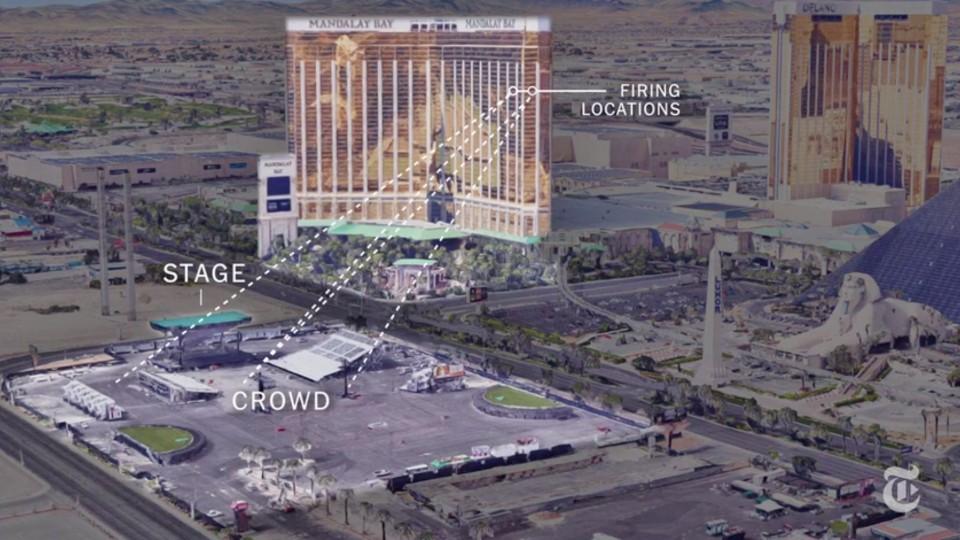How Forensic Architecture influenced Vegas shooting reports
Primary page content
Last month’s mass shooting in Las Vegas inevitably resulted in a wide range of coverage across multiple news outlets.

Still from New York Times investigation film
In their pioneering reporting of the massacre in which gunman Stephen Paddock killed 58 people, the New York Times adopted methods developed by Forensic Architecture, an investigative research agency based at Goldsmiths, University of London.
Using a technique called investigative video reporting, or video forensics — developed by Forensic Architecture — the Times video team reconstructed Paddock’s 10-minute rampage by identifying all 12 bursts of gunfire and placing them on a timeline.
Forensic Architecture conducts advanced architectural and media research on behalf of international prosecutors, human rights organisations and political and environmental justice groups, developing new investigative techniques to create pioneering forms of evidence.
The Times team that investigated the massacre was led by Senior Story Producer Malachy Browne. They began by collecting eyewitness video from the Associated Press, Storyful and social media, before examining the files for geolocation data, studying satellite imagery of before and after the shooting and using the position of landmarks, and even the moon, to synchronise multiple videos of the event.